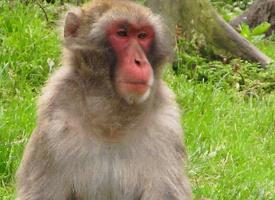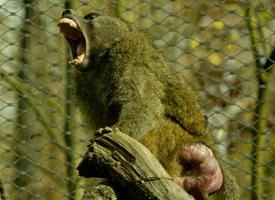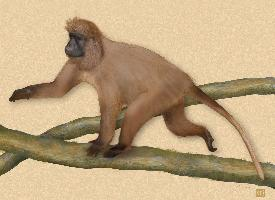
Známé také jako
- Magot
- Magot bezocasý
- Opice berberská
- Opice turecká
- Makak magot
Váhy a míry
| Délka | 70 cm |
|---|---|
| Hmotnost | 13 kg |
Popis zvířete
The Barbary macaque (Macaca sylvanus), also known as the Barbary ape or Magot, holds the unique distinction of being the only species of macaque found outside Asia and the only non-human primate species native to both Africa and Europe, specifically the Rock of Gibraltar. This species is of particular interest due to its distinctive behaviors, social structure, and the conservation challenges it faces.Physically, the Barbary macaque is a medium-sized primate with a robust build, displaying a significant degree of sexual dimorphism. Males typically weigh between 10 to 15 kilograms, while females are smaller, weighing between 5 to 10 kilograms. They have a distinctive appearance characterized by a short tail, which is almost invisible, leading to the misnomer of "ape". Their fur is thick and woolly, suited to the temperate environments they inhabit, ranging in color from yellowish-brown to grey, with a darker back and lighter underparts. Their faces are framed with a darker fur, and the facial skin is dark pink.
One of the most fascinating aspects of the Barbary macaque's life is its social structure. They live in large, mixed-gender groups of up to 100 individuals, though more commonly in groups of 10 to 30. These groups are matriarchal, with females forming the core of the social structure. The Barbary macaque exhibits a unique form of rearing its young, known as "alloparenting", where infants are commonly cared for by individuals other than their biological parents, including males. This behavior is rare among primates and is thought to strengthen social bonds within the group and reduce infanticide.
Barbary macaques have a broad diet, feeding on a variety of plants, fruits, leaves, and occasionally insects and small animals. Their feeding behavior changes with the seasons, depending on the availability of food resources in their habitat.
Historically, the Barbary macaque inhabited a vast range from Morocco and Algeria to Tunisia, and a semi-wild population still exists on the Rock of Gibraltar, believed to have been introduced by humans. Their habitat consists mainly of mountainous regions with dense forests and scrublands, though their range has significantly decreased due to deforestation, habitat fragmentation, and human encroachment.
Today, the Barbary macaque is listed as Endangered on the IUCN Red List. The primary threats to their survival include habitat destruction, the illegal pet trade, and hunting. In Morocco and Algeria, forests that are home to the Barbary macaque are being cleared for agriculture, logging, and development, severely reducing their living spaces. Additionally, young macaques are often captured for the pet trade, while adults are sometimes killed by farmers as pests.
Conservation efforts are underway to protect the Barbary macaque, including habitat preservation, legal protection, and education programs aimed at reducing the demand for wild macaques as pets. The species has also been included in Appendix II of CITES (the Convention on International Trade in Endangered Species of Wild Fauna and Flora), which regulates international trade to ensure it does not threaten their survival.
In conclusion, the Barbary macaque is a remarkable primate with complex social behaviors and a unique status as Europe's only wild monkey. Despite facing significant threats from human activities, efforts to conserve and protect these animals offer hope for their future survival and the preservation of their natural habitats.
Mapa výskytu

Podobná zvířata
Nové fotografie zvířat
Top 10 zvířat
- Dolphin gull (Leucophaeus scoresbii)
- Diana monkey (Cercopithecus diana)
- Moustached guenon (Cercopithecus cephus)
- Galápagos tortoise (Geochelone nigra complex)
- Stone loach (Barbatula barbatula)
- Japanese macaque (Macaca fuscata)
- Russian tortoise (Testudo horsfieldii)
- Greek tortoise (Testudo graeca)
- Common flying dragon (Draco volans)
- Vendace (Coregonus albula)


